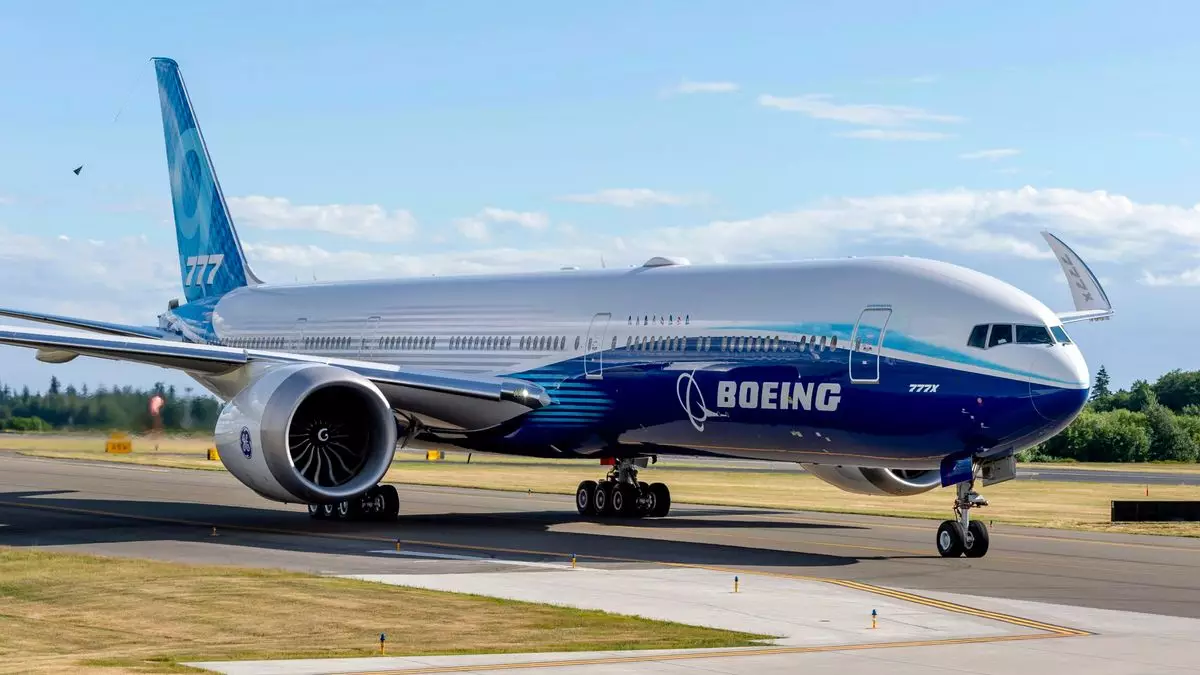In a decisive move to address ongoing financial struggles, Boeing has announced plans to reduce its workforce by approximately 10%, equating to about 17,000 employees. This decision comes as the company grapples with significant financial losses and the impacts of a labor strike that has severely affected the production of its most profitable aircraft. Under the leadership of new CEO Kelly Ortberg, Boeing faces mounting pressure to revamp its operations while navigating the complexities of labor relations and developmental delays.
Despite having around 170,000 employees globally—many stationed in key manufacturing hubs in Washington and South Carolina—Boeing’s recent financial trajectory has been anything but favorable. Ortberg’s memo to staff on October 11 outlined the necessity of these layoffs, highlighting a variety of positions that would be affected, including executives and managers, demonstrating that the company is not only cutting lower-tier roles but also impacting its leadership teams. This step comes after a series of temporary furloughs that were initially viewed as a solution; however, the impending layoffs forced a cessation of that plan.
The announcement also includes a delay in the rollout of Boeing’s latest aircraft model, the 777X, shifting its launch date from 2025 to 2026. Additionally, the production of the cargo variant of the 767 is set to cease in 2027 after fulfilling current orders. These strategic reductions indicate a company that is not just removing workforce but reshaping its entire operational framework in pursuit of stabilization and profitability.
Boeing’s financial standing has deteriorated alarmingly, with losses exceeding $25 billion since 2019. The company reported a cash burn of $1.3 billion during the third quarter alone, resulting in a staggering loss of $9.97 per share—a figure that outpaced projections by financial analysts. Notably, amidst these dismal numbers, Boeing disclosed several significant write-downs, including a hefty $2.6 billion charge linked to the delayed 777X program, $400 million associated with the 767, and additional charges for various defense projects that include the new Air Force One and a military refueling tanker.
This cascading financial strain is markedly worsened by the ongoing strike involving approximately 33,000 union machinists, which has directly halted production of several vital aircraft, such as the 737 Max and 777. As a result, Boeing’s cash flow—often bolstered by revenue gained from aircraft deliveries—has faced a severe blow, emphasizing the interconnectivity between labor actions and financial performance.
With Ortberg’s appointment in August marking the third CEO change in less than five years, it’s clear that Boeing is in a state of transformation as it searches for direction amidst turmoil. Ortberg, who entered the company as an outsider with extensive aerospace experience, faces the daunting task of steering Boeing towards recovery while managing the lingering fallout from high-profile safety scandals.
The scrutiny from the Federal Aviation Administration (FAA) following previous safety crises has heightened the stakes for Boeing’s leadership. The company’s agreement to plead guilty to conspiracy to commit fraud regarding the 737 Max, combined with a PR crisis that has resulted from NASA’s assessment of Boeing’s spacecraft safety, underscored the urgency for systematic changes within the organization.
The path that lies ahead for Boeing is fraught with challenges as the company confronts its historical missteps while attempting to reclaim its position as a leader in the aerospace sector. Ortberg’s comments regarding the need for “tough decisions” signal a recognition that serious adjustments are critical for long-term competitiveness. As Boeing looks towards the future, the integration of robust labor relations, focused production strategies, and financial prudence will determine whether the company can navigate out of this crisis and emerge stronger in a fiercely competitive industry landscape. The resilience of Boeing will ultimately hinge on its ability to adapt and innovate while learning from its past failures.

